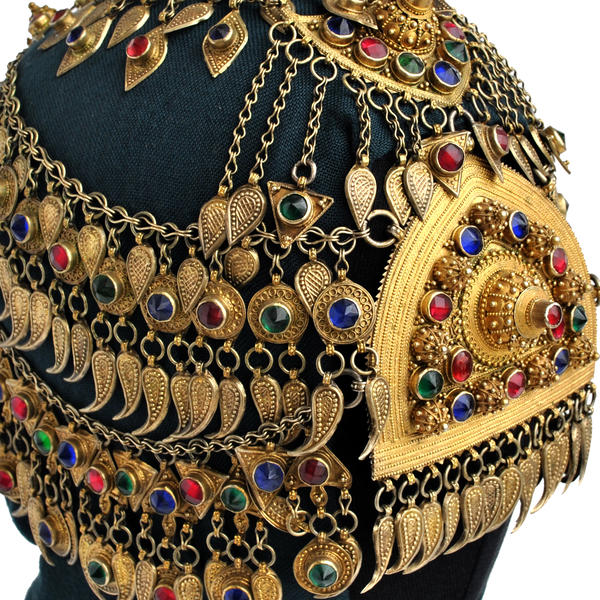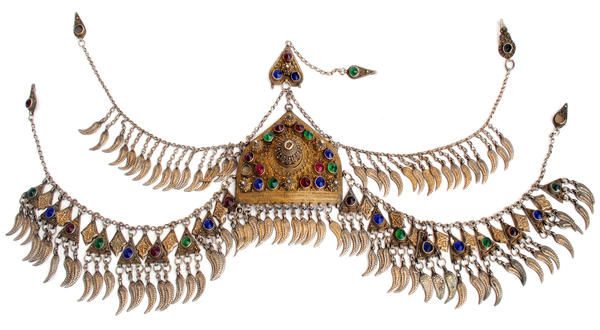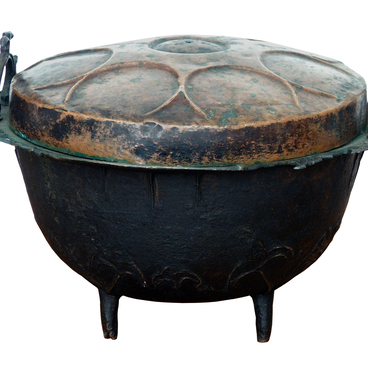The culture of southern Dagestan blends a variety of artistic traditions arriving from the East. They are particularly vivid in how traditional costumes and jewellery look. Belts, bracelets and headpieces manufactured here were stylistically quite distinct from similar items created elsewhere. They were more gaily coloured, ornamented abundantly with inserted pieces of faceted coloured glass, coins, pendants and other fine details associated with Islamic symbols such as stars, the crescent or tents.
Women’s headpiece kukem
Время создания
19th – 20th century
Размер
50x25 cm
Техника
Silver, colour glass, stamping, filigree, gilt
Коллекция
Выставка
4
Открыть в приложении#1
Women’s headpiece«Kukem’
#6
#2
A graphic example of this aesthetic is a festive decoration worn by Avar girls and called kukem, or k’ouk’em. Its shape is reminiscent of a pointed arch that long ago was used in the decoration of Oriental architecture.
The gilding technique was not characteristic of traditional archaic Dagestan items. The matter is that Dagestan people from early on believed gold to be a metal carrying a negative energy, capable of bringing bad luck and causing disasters, a metal that could be used in witchcraft.
Girls wore the kukem over a headscarf. The central plate was positioned on the top of the head and the chains that went round the woman’s head were fixed at the back with hooks. The item on display at the museum’s exhibition is decorated with blue, green and red pieces of glass shaped as a pointed tent. The pendants fall freely over the forehead and gracefully frame the face. The central plate carries ornaments of hooks and spirals made of wire
#3
Cook in the open
#4
Among other decorative elements are varicoloured glass pastes and small paisley-shaped pendants. In the pre-Islamic art of Iran, they signified flame tips, one of the sacred attributes of Zoroastrianism, an ancient Eastern religious teaching.
The abundance of small pendants created a very bright image of a festively dressed girl who was expected to impress everyone around with wealth and opulence. The key was the decorative effect. The kukem was popular across Dagestan with Avar, Laks and Aghul girls. Similar headpieces were also worn by Lezgin women.
The abundance of small pendants created a very bright image of a festively dressed girl who was expected to impress everyone around with wealth and opulence. The key was the decorative effect. The kukem was popular across Dagestan with Avar, Laks and Aghul girls. Similar headpieces were also worn by Lezgin women.
#7
P. S. Gamzatova Museum of Fine Arts of Dagestan
читать дальшескрыть
00:00
00:00
1x
Women’s headpiece kukem
Время создания
19th – 20th century
Размер
50x25 cm
Техника
Silver, colour glass, stamping, filigree, gilt
Коллекция
Выставка
4
Открыть в приложении
Поделиться




